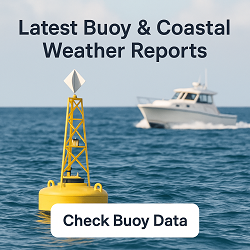Moab, UT Weather Forecast and Current Conditions
Current Conditions From Nearby Local Station
Feels Like 35°F
at
Point Forecast at a Glance







7-Day Temperature Trend
Week Ahead Summary
Cooling trend continues with high temperatures dropping from 59°F to 43°F. Mostly dry conditions with only one day showing snow chances.
Climate Context
This week's forecast shows temperatures running 3°F above the historical average for November-December. Normal highs for this period are around 45°F with lows around 22°F.
This Date in Weather History
1921 - New England was in the midst of a four day icestorm, their worst of record. Ice was more than three inches thick in many places following the storm, and property damage was in the millions of dollars. Northern New England received heavy snow with more than two feet reported in some areas. Overnight freezing rains continued through the day at Worcester MA while the wind increased to a gale. Streets become impassable even on foot, and whole towns were plunged into darkness without communication. The storm caused 20 million dollars damage to power lines, telephone lines and trees.
Moab, UT 7 Day Weather Forecast Details
Friday Nov 28

Day: Mostly sunny, with a high near 59. South southeast wind around 5 mph becoming west northwest in the morning.

Night: Mostly clear, with a low around 32. South wind around 5 mph becoming calm.
Saturday Nov 29

Day: Mostly sunny, with a high near 51. Calm wind becoming north northeast around 5 mph.

Night: Mostly cloudy, with a low around 30. Calm wind.
Sunday Nov 30

Day: Mostly cloudy, with a high near 48. South southeast wind around 5 mph becoming west southwest in the afternoon.

Night: A 20 percent chance of snow showers before 11pm. Partly cloudy, with a low around 25.
Monday Dec 1

Day: Sunny, with a high near 45.

Night: Partly cloudy, with a low around 27.
Tuesday Dec 2

Day: Partly sunny, with a high near 45.

Night: Mostly cloudy, with a low around 28.
Wednesday Dec 3

Day: Partly sunny, with a high near 45.

Night: Partly cloudy, with a low around 26.
Thursday Dec 4

Day: Mostly sunny, with a high near 43.
About Moab, UT
Content from Wikipedia, licensed under CC BY-SA 3.0.
How We Provide Better Local Weather
Current conditions: We use the nearest available station to your location - including professional MESONET/MADIS and local weather stations - often miles closer than regional airports.
Forecasts: National Weather Service point forecasts predict for your specific area, not broad regional zones, making them far more relevant to your location.



